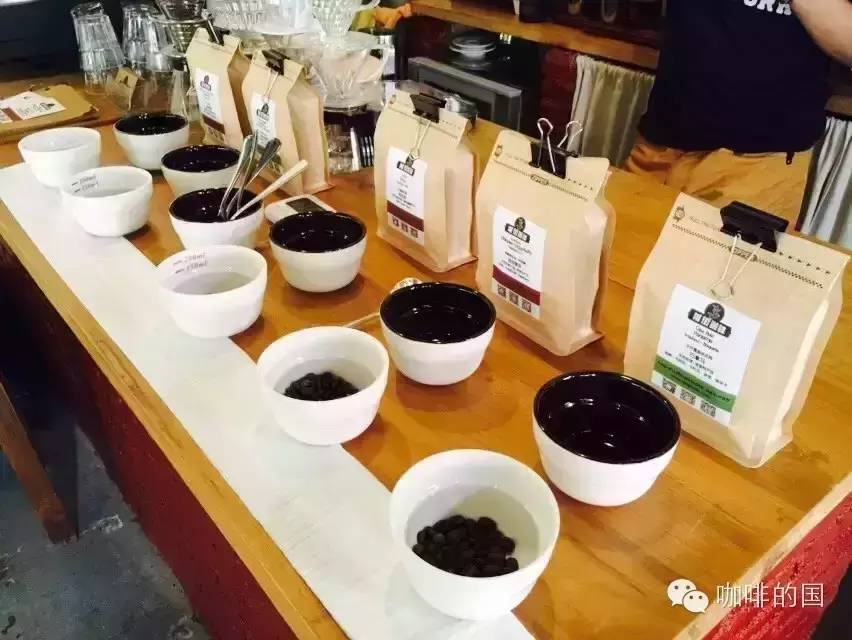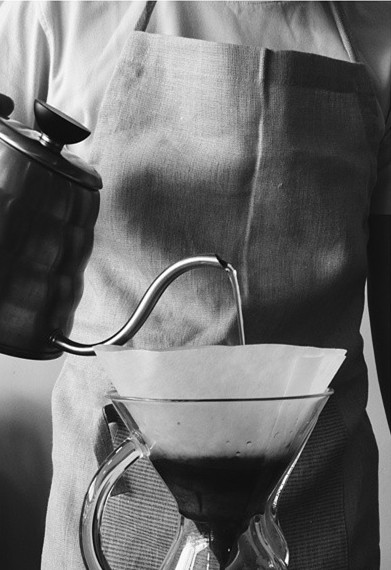How to identify the quality of coffee beans
The cup test is very important for the taste of coffee beans, no matter how much the flavor of a bean is advertised, or how much the baking level is boasted, before it is offered to consumers on the shelves, have been judged by the cup test. Baking beans will take sample beans from raw bean merchants, then test and bake them themselves, and then do cup tests in person to judge whether the beans are distinct and direct in flavor, distinct in level, and pure in taste. If you feel satisfied, you will order a batch of baked products, otherwise you will not restock. For some cafes that pursue the quality of the products, they will first buy some baked beans and taste their own cups, identify and experience the general flavor and characteristics of the beans through cup tests, and use this feeling as the flavor standard for hand-flushed products in the store, or decide whether or not to provide the beans in the store.
Because in the standard and complete cup test, all the flavor feelings of a bean will be shown at a glance, whether it is the dry fragrance after grinding, or the steaming wet fragrance, or the wet fragrance after removing dregs, as well as the taste performance of the entrance at different temperatures. If there is a defect in the performance of any link, it will be identified immediately. Therefore, the cup test is the gold standard to judge the quality of coffee beans.
Before, I also saw on the Internet that many cafes in other places often carry out cup test exchange activities aimed at enthusiasts, and it is indeed quite rare to have the opportunity to experience it at close range. We can also see that the shop owners have an open attitude of sharing and communication, which is worth encouraging. Knowing the relevant cup test knowledge can make you know more about coffee.
This time our new beans are:
1. Ethiopia 90+leverup Ethiopia NistuRuz/ rosemary Qingfu (washing treatment)
2. Geisha / Rosa Geisha of Hope Manor in the Cauca Valley of Cauca, Colombia (sun treatment)
3. AA level of Jiatugi treatment Plant in Nyeri production area of Kenya (washing treatment)
4. Bourbon Kaddura, La Tisa Manor, Farahan Plateau, Guatemala (washing treatment)
5. Colombia Triple Crown King Hope Manor rare variety Mocha round bean (honey treatment)
Some coffee beans have a string of names immediately after the name of the small producing area, which may be the name of a coffee farm or processing plant. For example, the long name of AA (washing treatment) of Jiatugi treatment Plant in Jiatugi, a Nyeri producing area in Kenya, tells us the following information:
Producing country: Kenya (Kenya)-Kenya is a famous coffee producer in East Africa
Producing area: Nyeri producing area-Nyeri is a coffee producing area of 1400-2000 meters above sea level.
Classification: AA-raw beans with more than 17 mesh granules of coffee beans
Production manor: Jiatugi processing plant
Treatment: washing
Methods of professional coffee tasting:
1. Appreciate the bean shape (bean seed, bean color, bean flavor, bean shape)
2. Grinding, grinding and cooking are required
3. Smell coffee powder (dry aroma)
4. Smell and make incense (coffee extract incense)
5. Smell the coffee liquid (wet aroma)
6. Rinse your mouth and clean your mouth.
7. Sip without swallowing, and feel the sweet, sour and bitter taste of coffee.
8. Pharynx: feel the aftertaste of coffee
9. Feel the taste of coffee in the mouth, throat and nose. The longer the coffee, the better.

Important Notice :
前街咖啡 FrontStreet Coffee has moved to new addredd:
FrontStreet Coffee Address: 315,Donghua East Road,GuangZhou
Tel:020 38364473
- Prev

What are the effects of the opponent making coffee? What are the effects of the extraction of hand coffee?
Today we are going to do an experiment to test what affects the taste of hand-brewed coffee. Both groups are soaked coffee with the same coffee beans, and the extraction time is two minutes. The first is stirring soaking, and the second group is static soaking. The first group was counterclockwise one minute before, and then poured the coffee into the v60, while the second group was stationary but stirred in the last ten seconds.
- Next

What is Turkish coffee Turkish coffee culture Turkish coffee grounds besides divination
Turkish coffee is estimated to be the last delicacy that Turks, especially girls, can not give up, not only because it has a mellow taste, but also a fortune teller. In fact, the coffee grounds of Turkish coffee is also a necessary artifact for house cleaning, beauty and beauty. Let the wooden furniture in the home be full of vitality. Turkish coffee, also known as Arabica coffee, is the ancestor of European coffee.
Related
- Detailed explanation of Jadeite planting Land in Panamanian Jadeite Manor introduction to the grading system of Jadeite competitive bidding, Red bid, Green bid and Rose Summer
- Story of Coffee planting in Brenka region of Costa Rica Stonehenge Manor anaerobic heavy honey treatment of flavor mouth
- What's on the barrel of Blue Mountain Coffee beans?
- Can American coffee also pull flowers? How to use hot American style to pull out a good-looking pattern?
- Can you make a cold extract with coffee beans? What is the right proportion for cold-extracted coffee formula?
- Indonesian PWN Gold Mandrine Coffee Origin Features Flavor How to Chong? Mandolin coffee is American.
- A brief introduction to the flavor characteristics of Brazilian yellow bourbon coffee beans
- What is the effect of different water quality on the flavor of cold-extracted coffee? What kind of water is best for brewing coffee?
- Why do you think of Rose Summer whenever you mention Panamanian coffee?
- Introduction to the characteristics of authentic blue mountain coffee bean producing areas? What is the CIB Coffee Authority in Jamaica?

